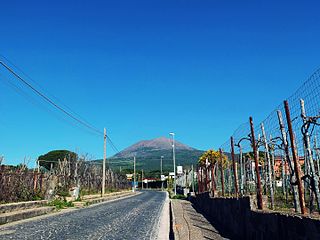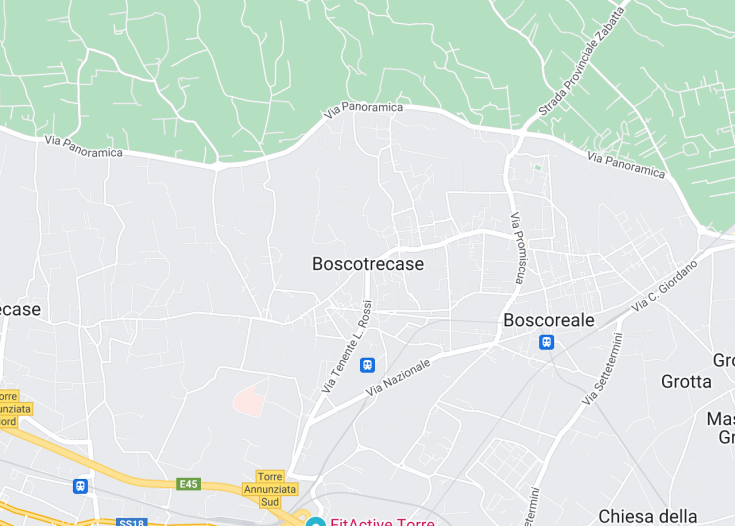Nestled within the picturesque landscape of Campania, Italy, Boscotrecase is a captivating destination steeped in history and natural beauty. This small town is notably positioned at the base of Mount Vesuvius, offering dramatic views and a rich volcanic soil that nurtures the renowned local vineyards. Boscotrecase is also a treasure trove of archaeological significance, home to ancient villas that once belonged to the Roman elite. Visitors can explore these historical sites, including the famous Villa Regina, and immerse themselves in a place where ancient luxury and modern authenticity blend seamlessly.
Remember to explore Boscotrecase’s surrounding natural trails, which offer serene walks and spectacular views of Vesuvius and the Gulf of Naples.
Plan your visit in late spring or early autumn to enjoy the mild weather and the vibrant colors of the local vineyards.
Top things to do & see in Boscotrecase
Select the following sights and activities to discover best tickets and tours available in Boscotrecase.
Boscotrecase: A Glimpse into Ancient Italian Elegance
| Country | Italy |
| Time in Boscotrecase | GMT+1 |
| Language spoken | Italian |
| Population | 10,746 (source: ISTAT) |
| Currency | Euro (€, EUR) |
| Airports |
|
Located near the serene Bay of Naples, Boscotrecase is a captivating town steeped in rich history. This delightful commune in the Campania region of Italy is most famed for its proximity to the ruins of Pompeii and lesser-known Roman sites, including its own buried villas like the Villa Regina. The eruption of Mount Vesuvius in AD 79 that devastated Pompeii also covered Boscotrecase, yet today, it is a vibrant community draped in modern Italian culture seamlessly blended with its ancient past.
Boscotrecase serves as a tranquil juxtaposition to the bustling tourist spots nearby. It offers a unique glimpse into daily life in a historic Italian town, where traditional practices and modern conveniences coexist. Furthermore, the town is a starting point for many to explore the extensive wine culture in the region, known for producing some of Italy’s famous labels under the shadow of Vesuvius.
The environmental and cultural layers of Boscotrecase make it particularly appealing to those interested in history, archeology, and viticulture. Locals pride themselves on a tight-knit community structure, ensuring that visitors are welcomed warmly into a region rich with tradition and local pride. The town’s vistas, framed by historically volcanic land, are amongst the most stunning in Italy, offering views of both the Mediterranean allure and rugged landscapes.
Each year, Boscotrecase attracts scholars and tourists alike, who are eager to delve into its historical depths while enjoying the pleasantries of a small Italian town. Its offerings of traditional cuisines, artisan-created wares, and the serene pace of life provide a perfect escape from the usual tourist trails, making it a haven for those seeking tranquility and a deep dive into cultural heritage.
Where is Boscotrecase?
Boscotrecase is situated in Southern Italy, tucked between the magnanimous Mount Vesuvius and the picturesque Bay of Naples.
Distances:
| Route | Distance by car | Time by car |
|---|---|---|
| Rome to Boscotrecase | 152 miles | 2 hours 45 minutes |
| Naples to Boscotrecase | 15 miles | 30 minutes |
What is Boscotrecase famous for?
Boscotrecase is renowned for its archeological sites, particularly the Roman villas preserved under volcanic ash from Vesuvius’ eruption. The town is also celebrated for its vibrant viticulture, producing exceptional local wines.
History
Pre-History & Ancient Times
The area around Boscotrecase, Italy, has traces of human presence dating back to prehistoric times. Archaeological findings suggest that these early inhabitants were drawn to the region due to its fertile volcanic soil and strategic location. As civilizations advanced, it came under the influence of the ancient Greeks, followed by Roman domination. Most notably, the town is just a few kilometers from the ancient city of Pompeii, sharing much of its history and fate during the catastrophic eruption of Mount Vesuvius in AD 79. This event buried Boscotrecase under a thick layer of ash and pumice, preserving parts of the town’s structure and history under volcanic debris.
Medieval Era
Following the decline of the Roman Empire, the area saw a period of feudalism. The town’s name, Boscotrecase, which translates to “house in the woods,” is believed to have originated during this time. Being somewhat isolated, the township was a quiet, agricultural hub, with most of its inhabitants involved in farming and livestock rearing. The settlement was subjected to various feudal lords and intermittently came under the rule of different noble families throughout the medieval period, each leaving its mark on the cultural and social fabric of the town.
Renaissance to 19th Century
During the Renaissance, Italy saw an explosion of art, science, and culture. However, Boscotrecase remained largely agrarian, missing much of the grandeur experienced in bigger cities. It wasn’t until the unification of Italy in the 19th century that Boscotrecase began to experience significant changes, with improvements to infrastructure and the establishment of better communication links to surrounding areas. This period marked the beginning of modernization for Boscotrecase, although it largely maintained its pastoral charm and traditional ways of life.
20th Century to Present
The town faced devastation during World War II, with several historical buildings damaged. Post-war reconstruction led to modern development, and today, Boscotrecase stands as a quaint blend of old and new. Efforts have been made to preserve its historical sites, while incorporating modern amenities to support its small population. The rediscovery and archeological excavations of the ancient sites covered by the Vesuvius eruption have brought increased tourism, contributing to the local economy and rekindling interest in the town’s rich historical tapestry.
Visit Boscotrecase
What to see and do in Boscotrecase, Italy
Visitors to Boscotrecase can explore an enchanting mix of historical and natural attractions. Notable sites include:
- The Villa of Agrippa Postumus, a grand Roman villa buried alongside Pompeii and Herculaneum under Vesuvius’ eruption and partially excavated, offering insights into ancient Roman residential architecture.
- The Church of Santa Maria della Libera, known for its beautiful frescoes and serene ambiance.
- Local vineyards surrounding the town, where one can taste exquisite local wines directly from the source.
Besides these attractions, hiking enthusiasts can explore the nearby trails offering panoramic views of the surrounding countryside and Mount Vesuvius.
Festivals and Events in Boscotrecase
Recurring events in Boscotrecase include the annual Grape Festival, typically held in September, celebrating the local wine production with tastings, music, and cultural performances. Additionally, the Feast of Saint Anne in July gathers locals and visitors for a traditional parade and religious ceremonies.
Best time to visit Boscotrecase
The best times to visit Boscotrecase are spring (April to June) and early autumn (September to October). These periods offer mild weather, ideal for exploring the outdoors and participating in local festivals.
Is Boscotrecase worth visiting?
Boscotrecase is indeed worth visiting for those who appreciate a blend of history, nature, and tranquility. The town offers a unique glimpse into the life of ancient Rome through its archaeological sites while providing the charms of Italian countryside life. Its proximity to Pompeii adds a significant cultural and historical dimension, making it a compelling destination for both casual tourists and history enthusiasts alike.









